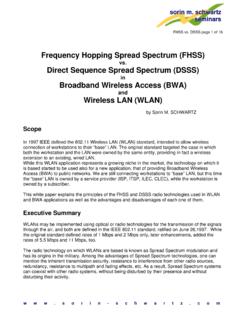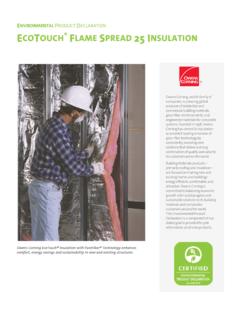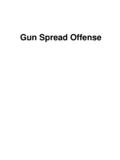Transcription of Spread Trading A Whole New Way To Trade
1 Spread Trading A Whole New Way To Trade by Trader, Author and Educator Joe Ross Material is copyrighted by Joe Ross & Trading Educators Inc. All rights reserved Legal Notices Joe Ross & Trading Educators, Inc. own all rights, title and interest to this publication. No part of this publication may be reproduced, distributed, or transmitted in any form, in Whole or in part, or by any means, mechanical or electronic, including photocopying and recording, or by any information storage and retrieval system, or transmitted by e-mail, without permission in writing from the Publisher. You have no rights to resell, reprint, reproduce, or digitize this Spread presentation. Introduction: What is a Spread ? Spread Trading in futures is as old as the hills, yet it is an entirely new concept for most current traders in futures. In this introductory piece, we will show you that spreads can be the most conservative, safest way to Trade in the futures markets.
2 But first, what exactly is a Spread ? A Spread Defined A Spread is defined as the sale of one or more futures contracts and the purchase of one or more offsetting futures contracts. You can turn that around to say it the opposite way: A Spread is the purchase of one or more futures contracts and the sale of one or more offsetting futures contracts. Either way you say it, it is a Spread . A hedge . A Spread is also created when a trader owns (is long) the physical vehicle and offsets by selling (going short) futures. This kind of Spread is called a hedge and is the reason for which futures markets were originally created. Furthermore, a Spread is defined as the purchase and sale of one or more offsetting futures contracts normally recognized as a Spread by the fact that the two legs of the Spread are actually related in some way. Related markets explicitly excludes those exotic spreads put forth by some vendors, which are nothing more than computer generated coincidences, which are not in any way related.
3 Exotic spreads such as Long Bond futures and Short Bean Oil futures may show up as reliable computer generated spreads , but bean oil and bonds are not really related. Such spreads fall into the same category as believing the annual performance of the stock market is somehow related to the outcome of the Bolshoi Ballet. In any case, for tactical reasons in carrying out a particular strategy, you want to end up being: Simultaneously long futures of one kind in one month, and short futures of the same kind in another month. (Intramarket Calendar Spread ). Simultaneously long futures of one kind and short related futures of another kind. (Intermarket Spread ). Long futures at one exchange and short related futures at another exchange. (Inter-exchange Spread ). Long or short an underlying physical commodity, and short or long a futures contract. (Hedge). Long or short an underlying equity position, and short or long a futures contract.
4 (Hedge). Long or short financial instruments, and long or short financial futures. (Hedge). The primary ways in which Spread Trading can be accomplished are: Via an Intramarket Spread Via an Intermarket Spread Via an Inter-exchange Spread Via ownership of the underlying while simultaneously offsetting with a futures contract Intramarket spreads : Officially, Intramarket spreads are created only as calendar spreads . You are long and short futures in the same market, but in different months. An example of an Intramarket Spread is that you are Long July Corn and simultaneously Short December Corn. Intermarket spreads : An Intermarket Spread can be accomplished by going long futures in one market and short futures of the same month in another market. For example: Short May Wheat and Long May Soybeans. Intermarket spreads can become calendar spreads by using long and short futures in different markets and in different months.
5 Inter-Exchange spreads : A less commonly known method of creating spreads is via the use of contracts in similar markets, but on different exchanges. These spreads can be calendar spreads using different months, or they can be spreads in which the same month is used. Although the markets are similar, because the contracts occur on different exchanges they are able to be Spread . An example of an Inter-exchange calendar Spread would be simultaneously Long July Chicago Board of Trade (CBOT) Wheat, and Short an equal amount of May Kansas City Board of Trade (KCBOT) Wheat. An example of using the same month might be Long December CBOT Wheat and Short December KCBOT Wheat. Why spreads ? The rationale behind Spread Trading is one of the best-kept secrets of the insiders of the futures markets. While spreading is commonly done by the market insiders, . much effort is made to conceal this technique and all of its benefits from outsiders, you and me.
6 After all, why would the insiders want to give away their edge? By keeping us from knowing about spreading, they retain a distinct advantage. Spreading is one of the most conservative forms of Trading . It is usually much safer than the Trading of outright (naked) futures contracts. Let's take a quick look at some of the benefits of using spreads : Intramarket spreads require considerably less margin, typically only around 25% - 75% of the margin needed for outright futures positions. Some spreads carry as much as a 95% discount to the margins required for outright futures. Intramarket spreads offer a far greater return on investment than is possible with outright futures positions. Why? Because you are posting less margin for the same amount of possible return. spreads , in general, trend more often than outright futures. They also Trade for longer periods of time because the trends are based on reality as opposed to market manipulation by insiders and market movers.
7 More benefits of using spreads : spreads are often trending when outright futures are flat. spreads can be filtered by virtue of seasonality, backwardation, and carrying charge differentials, in addition to any other filters you might be using in your Trading . spreads , much like options, can be used to create partial futures positions. In fact, many things that can be done with options on futures can be accomplished via Spread Trading . More benefits of using spreads : spreads allow you to take less risk than is available with outright futures positions. The amount of risk between two Intramarket futures positions is usually less than the risk in an outright futures position. The risk between owning the underlying and holding a futures contract involves the least risk of all. spreads make it possible to hedge any position you might have in the market. Whether you are hedging between physical ownership and futures, or between two futures positions, the risk is lower than that of outright futures.
8 In that sense, every hedge is a Spread . Spread order entry enables you to enter or exit a Trade using an actual Spread order, or by independently entering each leg of the Spread (legging in/out). spreads are one of the few ways to obtain decent fills by legging in/out during the Close of a market. More benefits of using spreads : Live data is not needed for Spread Trading , possibly saving you $$ in exchange fees, and costs for data. You will not be the victim of stop running when using Intramarket spreads , because there are no stops, only exit points. What Can You Expect? Here are some examples of what you can expect from Intramarket Spread Trading . We think you may pleasantly surprised! Would you want to have been long soybeans during this same period? Although you would have made money on the outright futures, you would have suffered from serious whipsaw during the entire length of the Trade .
9 At one point, there was a major draw-down on your margin account as prices plunged below your entry point. Who needs such aggravation? Certainly, we don't look forward to the kind of Trading represented by what would have happened on this outright soybean Trade . Prices were choppy and sloppy throughout the duration. Perhaps you think you would have gone in and out while prices were chopping around. However, it is never a good idea to churn your own account. Commissions and fees would have taken a substantial amount from your available capital. The Spread made 11 points. The outright soybean Trade made points. But to get that extra point and a-half you had to put up more than three times the margin, and you had to withstand a huge draw-down. The following two Intramarket trades in Soybean meal were taken based on seasonality: Lastly, we show an inter-exchange Spread .
10 This one was made between Kansas City wheat and Chicago wheat. We went Long Kansas City wheat and Short Chicago wheat on a seasonally based Trade when prices made a 1-2-3 low and then broke out past the #2 point. Our entry was at (a negative value), and we were looking for the Trade to become positive. It far exceeded our expectations by moving to a Spread value of 13. We exited at 8. This Spread made us points or $1, The margin required to put on this Spread was $1, : $743. for the Chicago wheat leg of the Spread and another $500 for the Kansas City wheat leg of the Spread . Intermarket and Inter-exchange spreads usually, but not always, require the posting of two margin amounts, since the exchanges do not offer the lowered margin requirements that are available for intra-market spreads . Nevertheless, there are many Intermarket and Inter-exchange spreads that can make you considerable amounts of money.








